Type Meat pie Place of origin Canada | Course main dish | |
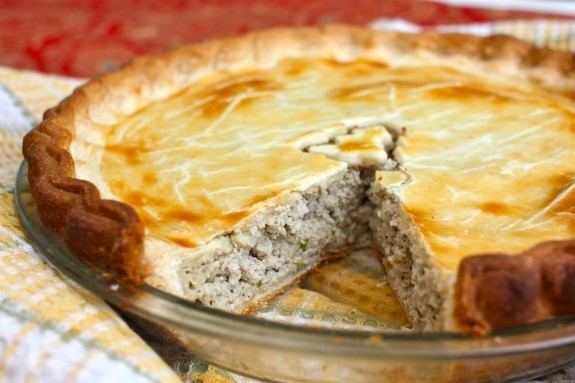 | ||
Region or state Quebec and New Brunswick (When New France. Main ingredients pork, veal, beef, or fish; game meat Other information Eaten: New Years Eve, Christmas, Christmas Eve, Thanksgiving Similar Cretons, Poutine, Sea‑pie, Pouding chômeur, Pâté chinois | ||
P t la viande tourti re
Tourtière ([tuʁ.ˈtjɛʁ], [tuʁ.ˈt͡sjaɛ̯ʁ]; also popularly referred to in Canada in print and in its pronunciation as tortière) is a meat pie originating from Quebec, usually made with finely diced pork, veal or beef. Wild game is often added to enhance the taste of the pie. A traditional part of the Christmas réveillon and New Year's Eve meal in Quebec, it is also sold in grocery stores, across Canada, all year long.
Contents
- P t la viande tourti re
- Tourti re du lac
- Saguenay Lac Saint Jean and Eastern Quebec
- Montreal
- Manitoba
- Acadia
- References
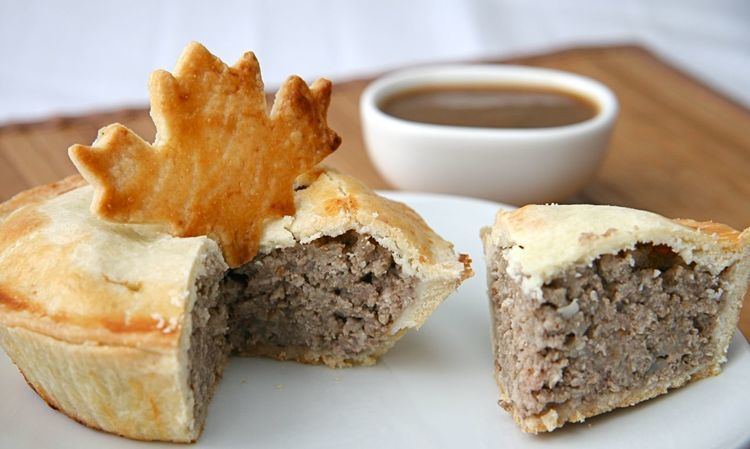
Tourtière is not exclusive to Quebec. It is a traditional French-Canadian dish served by generations of French-Canadian families throughout Canada and the bordering areas of the United States. In the New England region of the U.S., especially in Maine, Rhode Island, Vermont, New Hampshire, and Massachusetts (e.g., Chicopee and Attleboro), late 19th and early 20th century immigrants from Quebec introduced the dish.
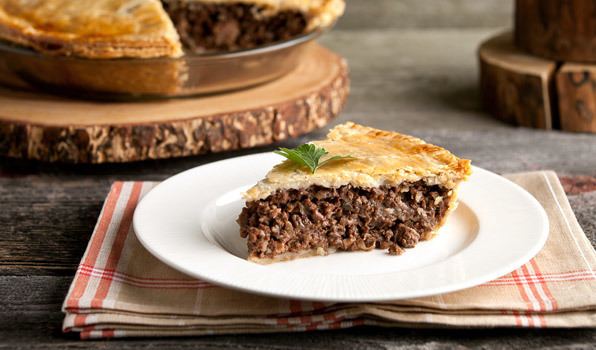
There is no one correct filling; the meat depends on what is regionally available. In coastal areas, fish such as salmon is commonly used, whereas pork, beef, rabbit and game are often included inland. The name derives from the vessel in which it was originally cooked, a tourtière.
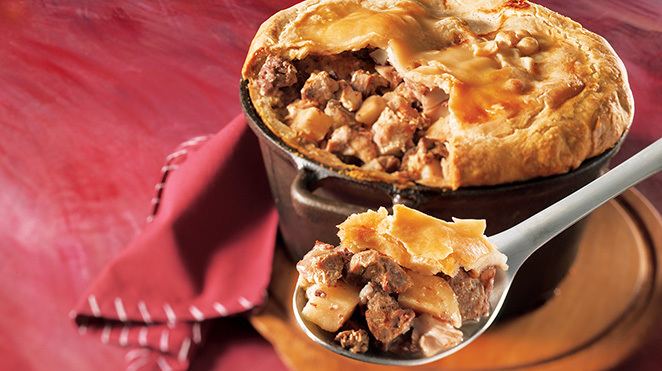
Tourtière has become the traditional and iconic dish of the region of Saguenay, Quebec since 1970, and It has undergone several metamorphoses according to the culinary history. The first recipe for what we consider today as pies was documented back to 1600BC. After that around 400 AD, some evidence proved the existence of patina (the prototype of tourtière ), which was slightly different from the pie we have today in terms of the pie crust and composition. In the Middle Ages, patina and artocreas reappeared in some European countries. In Italy, the pie was named as “pasticcio”, “timballo” or “timpano de macaroni”. Something similar also occurred in England which was named “battle pies” and also the“tourte parmenienne” in France. During the 18th Century, a dish named “sea pie” became popular among French and British colonists. Jean-Pierre Lemasson (2009) described sea pie as “the direct forerunner of the tourtière of Lac-Saint-Jean”(p.109)
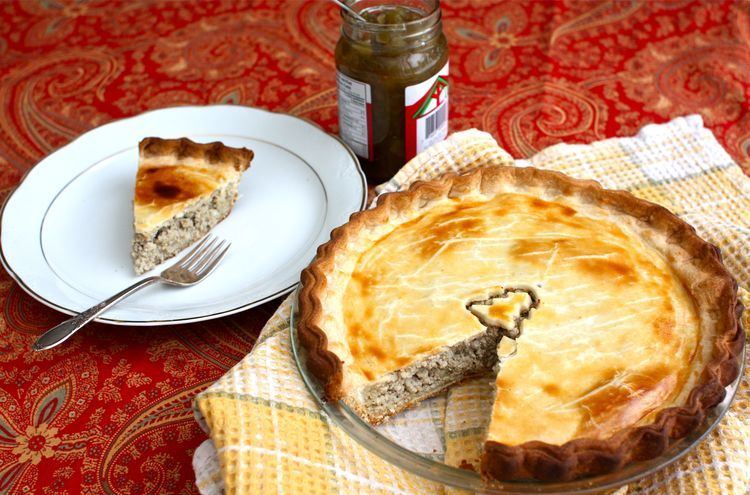
Tourti re du lac
Saguenay-Lac-Saint-Jean and Eastern Quebec
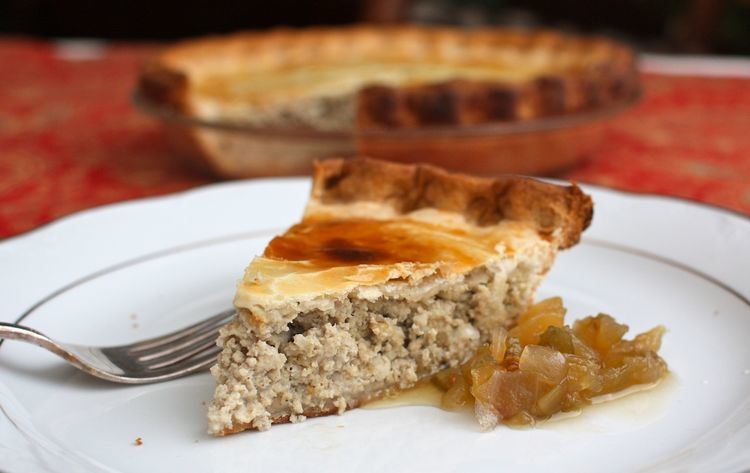
The tourtières of the Saguenay-Lac-Saint-Jean area and Eastern Quebec are slow-cooked deep-dish meat pies made with potatoes and various meats (often including wild game) cut into small cubes.
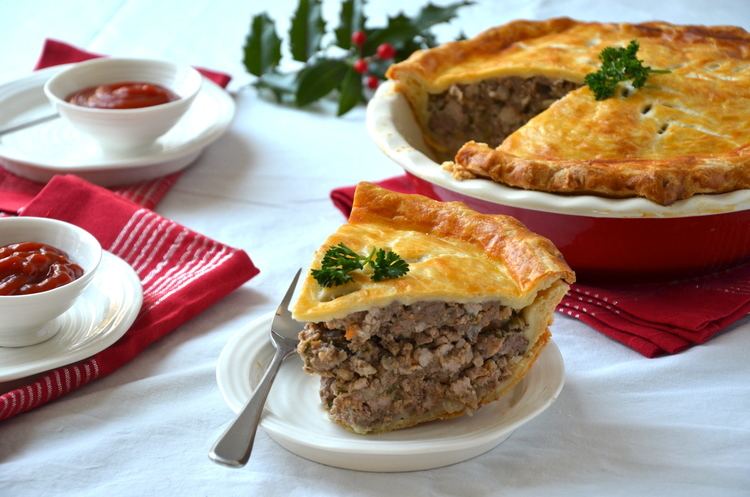
Elsewhere in Quebec and the rest of Canada, this variety of tourtière is sometimes referred to, in French and in English, as tourtière du Lac-Saint-Jean or tourtière saguenéenne to distinguish it from the varieties of tourtière with ground meat.
Montreal
Tourtière in Montreal is made with finely ground pork only (which can be hard to find as the meat is often ground too coarsely elsewhere). Water is added to the meat after browning and the addition of cinnamon and cloves is what makes it unique. Many people use ketchup as a condiment, though the tourtière is also often eaten with maple syrup or molasses, mango chutney, or cranberry preserves.
Although it is less popular than the original tourtière and the tourtière du Lac-Saint-Jean, this version can also be commonly found throughout Canada and its surrounding areas.
Manitoba
Tourtière is an integral part of holiday-time meals for French Canadians in St. Boniface, as well as in Manitoba's rural Francophone areas. Browned meat is seasoned with varying combinations of savory, nutmeg, cloves, cinnamon, celery salt, dry mustard, salt and pepper.
Acadia
Acadian tourtière, or pâté à la viande (literally meat pie), is a pork pie that may also contain chicken, hare and beef. Pâté à la viande varies from region to region in New Brunswick, Nova Scotia and Prince Edward Island. In Petit-Rocher and Campbellton the dish is prepared in small pie plates and known as petits cochons (little pigs).
